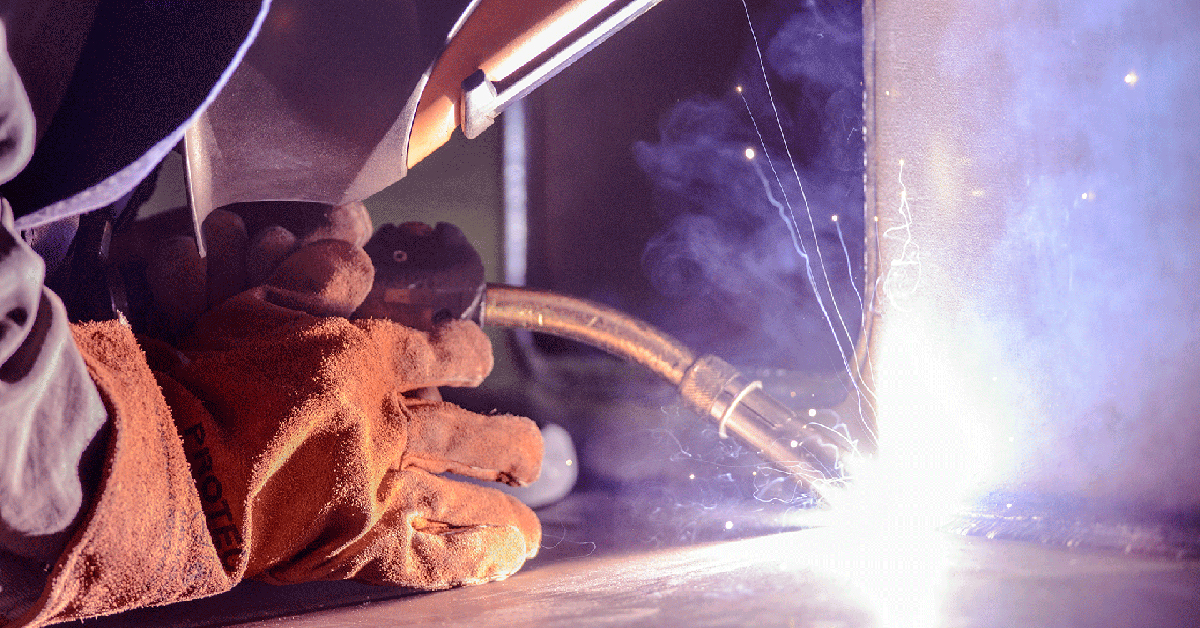Understanding the Causes and Solutions for Undercut Welding in Metal Fabrication Processes
In the realm of steel manufacture procedures, the event of undercut welding postures a substantial obstacle that requires a thorough understanding of its reasons and feasible options. The complex interplay of various factors during welding procedures can bring about this unfavorable phenomenon, impacting the structural honesty and total high quality of the welded joints - Preventing weld undercut. By dissecting the origin of undercut welding and checking out efficient remedial actions, makers can raise the requirement of their craftsmanship and ensure the manufacturing of perfect metal parts
Typical Root Causes Of Undercut Welding
Frequently forgotten in metal fabrication, undercut welding takes place because of various variables that demand meticulous interest and know-how to be efficiently mitigated. One typical reason for undercut welding is too much warm input. When the heat input is expensive, it can result in the melting and succeeding erosion of the base product along the edges of the weld joint, developing a groove or undercut. Furthermore, inappropriate welding methods, such as making use of the wrong welding angle or take a trip speed, can likewise add to undercut development. Inadequate protecting gas coverage is one more vital element that can cause undercutting. Inadequate gas insurance coverage stops working to shield the weld pool effectively, leading to oxidation and undercut flaws. In addition, the choice of welding specifications, such as voltage, existing, and wire feed speed, plays a substantial role in the incident of undercut welding. Comprehending these usual reasons is crucial for executing preventative measures and guaranteeing high-grade welds in steel manufacture procedures.
Effect of Incorrect Welding Parameters
Imprecise welding parameters can substantially endanger the integrity and high quality of welded joints in steel manufacture procedures. The impact of incorrect welding specifications shows up in numerous ways, leading to structural weaknesses and problems in the welded elements. Thorough focus to welding parameters is critical to make sure the manufacturing of high-grade welds with the wanted mechanical residential or commercial properties and structural stability.
Impact of Improper Torch Angle
Incorrect torch angle in welding operations can considerably impact the quality and integrity of the final weld joints in metal fabrication procedures. The lantern angle plays an essential role in identifying the heat input and distribution during welding. When the lantern angle is wrong, problems such as undercutting can occur. Damaging is a common welding problem where a groove develops along the weld toe, weakening the joint and jeopardizing its architectural honesty.
A lantern angle that is as well steep can lead to not enough infiltration, incomplete fusion, and raised spatter. On the various other hand, a torch angle that is also superficial can result in too much infiltration, burn-through, and distortion of the base material. Preventing weld undercut. Correct lantern angle is vital for ensuring regular weld high quality, strength, and look
To stop undercutting and various other problems caused by incorrect torch angles, welders have to be trained to keep the right torch angle throughout the welding procedure. Regular tracking and adjustment of lantern angles during welding can assist my link achieve audio welds with minimal flaws.
Role of Inadequate Welding Methods

One more element of insufficient welding techniques is improper weld preparation. Poor cleansing of the base steels, inaccurate joint design, or insufficient side prep work can all contribute to undercut welding. Moreover, inadequate securing gas protection or utilizing the wrong kind of gas can cause incomplete fusion and the development of undercut issues.
To attend to the function of inadequate welding strategies in metal fabrication procedures, it is vital to offer click for more thorough training for welders. Appropriate education on welding criteria, joint preparation, and securing gas choice can help protect against undercut welding and guarantee top quality welds in steel construction tasks.
Efficient Solutions for Undercut Welding
Addressing undercut welding in metal manufacture needs implementing efficient solutions to improve weld quality and architectural integrity. One of the key services to battle undercut is to change welding criteria such as voltage, current, and take a trip rate to guarantee appropriate warm input and blend. By fine-tuning these settings, welders can protect against excessive melting of the base steel and filler product, decreasing the likelihood of undercut development.
In addition, proper joint preparation is crucial in stopping undercut. Making certain clean base metal surface areas cost-free of contaminants and utilizing the ideal bevel angle can help advertise far better weld penetration and decrease the danger of undercut - Preventing weld undercut. Using ideal welding techniques, such as weaving or oscillating the torch, can additionally assist in distributing heat uniformly and filling up the weld joint appropriately, minimizing the possibility of undercut problems
Moreover, picking the redirected here proper welding consumables, consisting of electrodes and filler steels, is essential in reducing undercut. Utilizing materials with suitable chemical structures and mechanical properties can add to achieving audio welds with marginal undercut. Normal examination and quality assurance actions need to additionally be applied to identify and resolve undercut concerns immediately, making sure the general stability of produced metal parts.

Verdict
To conclude, comprehending the causes and solutions for undercut welding in steel manufacture procedures is important for achieving top quality welds. By addressing usual reasons such as inaccurate welding parameters, inappropriate lantern angle, and inadequate welding strategies, welders can stop undercutting and ensure solid, long lasting welds. It is vital to pay attention to these variables and carry out effective remedies to enhance the overall welding procedure and final item high quality.
